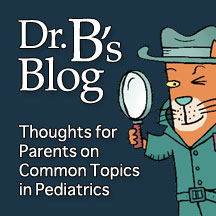Hand, foot, mouth syndrome (HFM) is a common viral infection most often seen in young children. It’s most common during the summer months, but can occur at any time of the year. A child may get HFM more than once because different viruses cause the infection.
When a child gets HFM, they typically have fever, sore throat, sleep disruption and reduced interest in eating or drinking. Like most viral infections, there is no specific treatment for the illness. Therefore, treatment consists of fever control and keeping the child hydrated until the infection resolves, usually within 3 to 5 days.
One of the common questions parents ask is when their child can return to school or daycare. The answer is different from what parents are used to with other infections. For example, if a child has a strep throat, she can usually return to school after being on antibiotics for 24 hours. If a child has a nonspecific viral infection, she can return to school after being fever-free (without medication) for 24 hours.
HFM is different for two important reasons. First, about 20% of children with HFM have no symptoms. This means that while they are not sick themselves, they can spread the virus to other people. Second, if a child with HFM is sick, she will be contagious for a week or more after the symptoms have resolved. Taken together, these facts mean you can’t do anything to stop the spread of HFM from a school or daycare setting.
My usual recommendation is to keep children home until they are fever-free, feeling better and eating and drinking normally.











